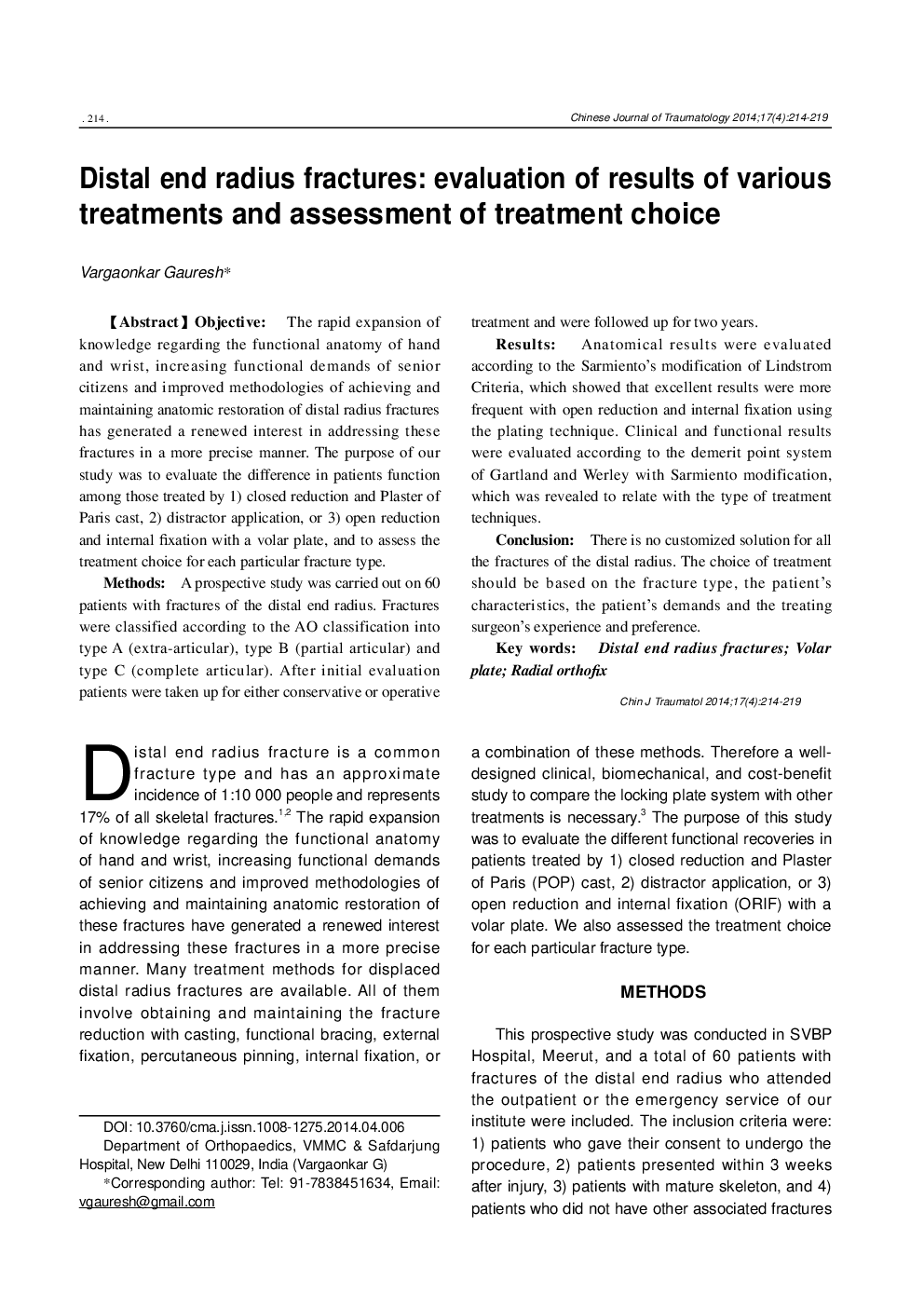| Article ID | Journal | Published Year | Pages | File Type |
|---|---|---|---|---|
| 3107244 | Chinese Journal of Traumatology | 2014 | 6 Pages |
ObjectiveThe rapid expansion of knowledge regarding the functional anatomy of hand and wrist, increasing functional demands of senior citizens and improved methodologies of achieving and maintaining anatomic restoration of distal radius fractures has generated a renewed interest in addressing these fractures in a more precise manner. The purpose of our study was to evaluate the difference in patients function among those treated by 1) closed reduction and Plaster of Paris cast, 2) distractor application, or 3) open reduction and internal fixation with a volar plate, and to assess the treatment choice for each particular fracture type.MethodsA prospective study was carried out on 60 patients with fractures of the distal end radius. Fractures were classified according to the AO classification into type A (extra-articular), type B (partial articular) and type C (complete articular). After initial evaluation patients were taken up for either conservative or operative treatment and were followed up for two years.ResultsAnatomical results were evaluated according to the Sarmiento’s modification of Lindstrom Criteria, which showed that excellent results were more frequent with open reduction and internal fixation using the plating technique. Clinical and functional results were evaluated according to the demerit point system of Gartland and Werley with Sarmiento modification, which was revealed to relate with the type of treatment techniques.ConclusionThere is no customized solution for all the fractures of the distal radius. The choice of treatment should be based on the fracture type, the patient’s characteristics, the patient’s demands and the treating surgeon’s experience and preference.
